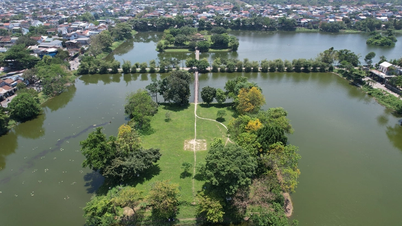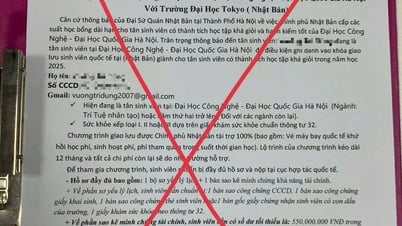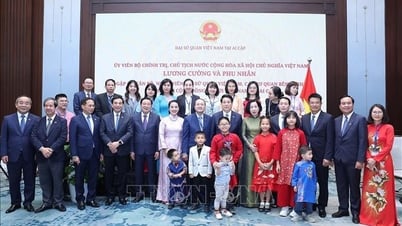Types of administrative units below the province are prescribed by law.
The report said that 99.833% of comments on the provision on the organization of administrative units (Article 110 of the 2013 Constitution) agreed with the amendment to implement the policy on organizing two-level local governments.
Da Lat City, Lam Dong Province. PHOTO: DOC LAP
Some opinions suggest specifying administrative units below the province including: communes, wards and special zones; replacing the phrase "administrative units below the province, centrally-run city" with "grassroots-level administrative units".
There is a proposal to clarify whether "administrative units below provinces and centrally-run cities" include commune-level administrative units and equivalent or other administrative levels.
The Constitutional Amendment Committee explained that the use of the phrase "administrative units below provinces and centrally-run cities" is intended to be consistent with other provisions of the Constitution. This phrase has been used since the 1959 Constitution and is included in many provisions of the 2013 Constitution.
Types of administrative units below the provincial and municipal levels will be specifically regulated in the Law on Organization of Local Government, which is being submitted to the National Assembly for consideration at the 9th session.
Since the country's founding, the types of administrative units in Vietnam have frequently changed in terms of name, administrative level, nature and scale. In all four previous comprehensive amendments and supplements to the Constitution, the regulations on the organization of administrative units were also amended because the names of each type of administrative unit were defined in too much detail in the Constitutions.
Therefore, general regulations as in the current draft will ensure long-term stability, creating a basis for future development. If it is necessary to form new types of administrative units, it will not be necessary to frequently amend the provisions of the Constitution.
The Constitutional Amendment Committee also said that the Law on Organization of Local Government under discussion is expected to stipulate administrative units including: provinces and centrally-run cities (collectively referred to as provincial level) and communes, wards, and special zones under provincial level (collectively referred to as commune level); below the commune level there will be no other administrative units.
Reducing intermediary levels, bringing the government closer to the people
There are opinions that it is necessary to diversify the types of administrative units below the province and centrally-run cities; it is possible to consider retaining the current cities and towns and defining them as basic administrative units without dividing them into wards to ensure the requirements of urban management and development and reasonable resource allocation.
The Constitutional Amendment Committee reiterated its view that the specific determination of administrative units below the provincial and centrally-run cities will be stipulated by the National Assembly in laws to suit the practical situation in each period.
Currently, the determination of communes as administrative units in rural areas, wards as administrative units in urban areas, and special zones as administrative units in some islands has closely followed the resolutions, conclusions, and directives of the Party.
The two-level local government organized in association with administrative units according to this model will ensure the requirements of streamlining the apparatus, reducing intermediate levels, improving management efficiency, saving costs and state budget, bringing the government closer to the people, responding to and directly solving problems of people's livelihood, urban areas, rural areas, and islands.
The Constitutional Amendment Committee said this is also a step to rearrange administrative units to ensure proper characteristics and separation between urban and rural areas, creating a basis for applying mechanisms and policies appropriate to each type and requirements of urban management and sustainable development.
Organizing urban administrative units as wards will contribute to unifying the management model, facilitating planning work, and increasing regional connectivity. At the same time, organizing according to this model will ensure better people's ownership, and the voices and interests of residents in small urban areas will also be taken into account and not overwhelmed by large urban areas within the same provincial administrative unit.
Source: https://thanhnien.vn/uy-ban-sua-doi-hien-phap-neu-ly-do-khong-giu-thi-xa-thanh-pho-thuoc-tinh-185250613082549607.htm
































![[Photo] Nghe An: Provincial Road 543D seriously eroded due to floods](https://vphoto.vietnam.vn/thumb/1200x675/vietnam/resource/IMAGE/2025/8/5/5759d3837c26428799f6d929fa274493)


































































Comment (0)